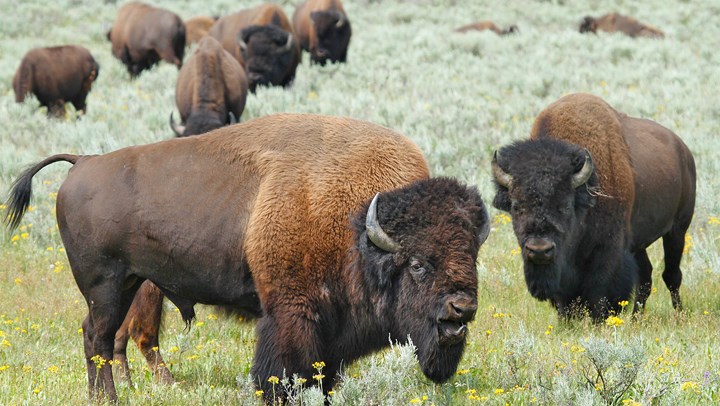
by Frank Miniter - Friday, September 15, 2017

The National Park Service (NPS) announced they’ll use volunteers (hunters) and other means to “reduce the size of the bison herd on the North Rim of Grand Canyon National Park.”
The NPS says there are 400 to 600 bison in this Arizona national park and that studies have shown the herd needs to be reduced to about 200 to reduce environmental impacts such as “water, vegetation, soils, archaeological sites and values such as visitor experience and wilderness character.”
But how did common sense win out? How did the NPS make the sensible decision to allow America’s hunters to apply for the chance to harvest and enjoy some portion of this overabundance of game meat?
First, let’s dispel a popular myth. Though common opinion has it that hunting is forbidden in all national parks, the truth is that, as of 2015, the NPS said that 63 out of 407 NPS properties allowed hunting. In total, more than 30 percent of NPS’ total acreage uses hunting to manage game populations. About two-thirds of these lands are in Alaska, but NPS properties allow hunting in Maryland, South Dakota and in many other states.
So yes, Yellowstone National Park and other famous parks do prohibit hunting today, but many parks do allow hunting.
In this case, the NRA as well as Safari Club International (SCI) were instrumental in showing NPS officials the benefits of using hunters to reduce wildlife populations to required management levels. The cost benefits alone, compared to hiring contract sharpshooters, make using hunting the best option.
Susan Recce, director of NRA-ILA's Conservation, Wildlife and Natural Resources, said, “I have been championing the use of hunters to control the population of game species in national parks for nearly 20 years and have submitted comments on numerous management plans addressing elk and whitetail deer overpopulations in national parks.”
As a result of the NRA and SCI’s persistence, the NPS used hunters in reducing the elk herds in Rocky Mountain National Park and Theodore Roosevelt National Park where elk were over-populated.
NRA’s Recce and Anna Seidman, SCI’s director of litigation, kept attending meetings with the NPS and other officials to argue that hunters can be used as a cost-effective wildlife management tool in NPS properties. SCI also submitted legal briefs supporting the viability and legality of using volunteer hunters to protect ecosystems from over-browsing and other effects of over-populated big-game populations.
Test programs were tried and were very successful in Rocky Mountain National Park and Theodore Roosevelt National Park where elk were over-populated.
After the NRA and others pointed this out, the NPS looked into this alternative for the bison population in the North Rim of Grand Canyon National Park. A March 2016 report on the RMNP and TRNP elk reductions found that the use of volunteers was “cost effective” and “potentially applicable to other overabundant ungulate situations within the National Park System.” Also, the report said that despite initial reservations, both parks’ personnel began to see the volunteers as valuable assets to game management.
So this was hardly a sudden example of common sense prevailing. Rather, it was the result of your NRA and others dutifully pointing out that it simply makes more sense to have hunters harvest game in accordance with wildlife management goals set by biologists than it does to pay sharpshooters exorbitant fees.
The details of this management strategy for bison are still being worked out by the NPS. Right now the NPS is talking about trapping and transferring some bison to other regions and seeking volunteers who are physically fit and proficient with a firearm to kill a prescribed number of bison. Volunteer hunters likely will be selected through a lottery for a once-in-a-lifetime tag, but it isn’t yet clear how the meat would be distributed.
The Grand Canyon bison herd is descended from some introduced to northern Arizona in the early 1900s as some ranchers tried to crossbreed them with cattle. Outside of the NPS property, the state of Arizona has an annual draw for tags on the Kaibab National Forest.
■ ■ ■
Editor's Note: Frank Miniter is the author of "This Will Make a Man of You: One Man’s Search for Hemingway and Manhood in a Changing World." Miniter is also the author of the New York Times' Bestseller "The Ultimate Man’s Survival Guide," as well as "The Future of the Gun" and “The Politically Incorrect Guide to Hunting.”
E-mail your comments/questions about this site to:
[email protected]
